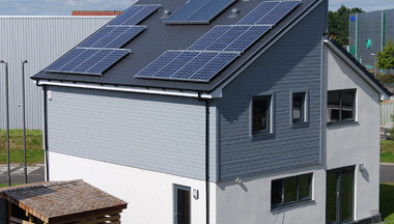Final days of Right to Buy in Scotland
The Right to Buy scheme will end at midnight on Sunday, marking the end of a two-year notice period after Scottish MPs voted to abolish it.
One of the pillars of Thatcherism, the policy saw half a million Scots families purchase their council or housing association home at a discount. Trumpeted in some quarters as a vital step toward a property-owning democracy, others saw Right to Buy as a political attempt to undermine Labour’s working class base and weaken municipal power.
Leaders from the social housing sector including the Scottish Federation of Housing Associations (SFHA) and the Association of Local Authority Chief Housing Officers (ALACHO) have today welcomed the end of the right to buy policy in Scotland and said its demise came “not a moment too soon”.
The Right to Buy in Scotland was established by the Tenants’ Rights, Etc. (Scotland) Act in 1980, with council tenants offered a 33 to 50 per cent discount, depending on their how long they had lived in their home. It was extended to housing association tenants six years later.
Subsequent legislation, by the UK Parliament and – following devolution - the Scottish Parliament, made various amendments to the terms under which tenants could exercise their Right to Buy.
Around 35 per cent of Scotland’s homes were owner-occupied when the policy started, after 20 years it was 63 per cent. But in recent years, a burgeoning private rented sector (PRS) amid “decades of underinvestment” has overshadowed Right to Buy’s perceived benefits. Between the years 1979-80 and 2014-15 a total of 494,580 council and housing association homes were sold under the legislation, but only 163,000 new ones built – a net loss of a third of a million.
SFHA and ALACHO among others have long campaigned for the policy to be curbed or ended in order to preserve much needed council and housing association homes for rent.
The Scottish Government have set a target of 50,000 new affordable homes over the next five years to meet existing and future housing needs, and local authorities and housing associations across Scotland are combining their efforts to meet this target. Although some social landlords reported an increase in the number of applications from tenants wishing to exercise their right to buy before the 31 July deadline, sector leaders recognise that the ending of the Right to Buy marks a sea change in the availability and access to genuinely affordable and high quality rented housing for everyone.
Mary Taylor, SFHA chief executive, said: “We are delighted that all forms of the Right to Buy policy in Scotland have now come to an end and this hasn’t come a moment too soon. Right to Buy has had its day and has no place in modern Scotland.
“Although particular individuals have benefitted from the right to buy and at significant discounts, the sales have been at a loss to the greater public good. Half a million social rented homes have been lost over the three decades of this policy in Scotland, and very often the better stock in the more popular areas.
“The SFHA and its members have campaigned for the abolition of this right for years, and we appreciate the Scottish Parliament’s recognition in 2013 of the arguments which we put forward.
“By ending the Right to Buy, we will be able to preserve much needed social housing stock for rent that is affordable to people on low incomes.
“SFHA highlighted the very same arguments in the ‘Thatcher Room’ at Portcullis House at Westminster when it gave evidence to the Communities and Local Government Committee in December 2015 on what lessons England could learn from Scotland’s move to end Right to Buy.”
Commenting on the end of Right to Buy, Tony Cain, policy manager at ALACHO, added: “Ending the Right to Buy will allow social landlords to plan longer term, manage assets and income more effectively and most importantly to invest to increase the number of social rented homes for the first time since 1981.
“That means more long term jobs and apprenticeships to maintain our homes and more households taken out of housing need and living in warm, dry and genuinely affordable housing.”
Local authorities and housing associations across Scotland have been impacted by the operation and legacy of the policy.
Grampian Housing Association highlighted that there is a significant lack of affordable housing in the North East, and Right to Buy no doubt contributed to this, stripping away the supply of amenity bungalows and family sized houses in areas of high housing demand.
Reflecting on the impact and legacy Right to Buy has had on Grampian Housing Association, Neil Clapperton, chief executive, said: “Demand continues to far outweigh supply and waiting lists are in the thousands.
“Our greatest concern is with the legacy issues arising from the RTB for the stock transfer property/estates.
“The abolition of the RTB is just a case for us of ‘closing the gate after the horse is bolted’ and does not really deal with the legacy issues.”
Graeme Brown, director of Shelter Scotland, said the policy has resulted in a “housing crisis” north of the border and “has no place” in Scotland’s housing system.
He added: “It is good news that Right to Buy has finally had its day in Scotland.
“More than half a million social homes were sold off under right-to-buy in Scotland. For every three homes sold only one was built in replacement – so no wonder we have a housing crisis in Scotland.
“Now that Right to Buy is consigned to history - and with a waiting list of 150,000 for a council house – what Scotland desperately needs now is a step change in the delivery of affordable housing. We need to build at least 12,000 new affordable homes a year to meaningfully tackle Scotland’s housing crisis. We also need a new national homelessness strategy to get to grips with the root causes of homelessness.
“Only with these progressive changes will we start to address the profound damage caused to our housing system by policies like Right to Buy and the decades of underinvestment in affordable housing.”
A spokesperson from South Lanarkshire Council highlighted the impact it has had across South Lanarkshire: “South Lanarkshire Council has sold over 39,000 homes, almost 60 per cent of its stock since the introduction of the Right to Buy, in some communities over 90 per cent of the council stock has been sold, across the council area family houses and those in the highest demand areas have seen the highest level of sales.
“Waiting lists have risen and the council’s ability to meet housing need in the area has been significantly reduced. Whatever the arguments over the Right to Buy were, everyone involved in council housing including tenants representatives have agreed that it’s a policy that has had its day.
“South Lanarkshire Council, like others across Scotland, is looking forward to being able to increase supply and retain its housing stock for rent to meet the considerable levels of need for housing required by residents in South Lanarkshire.”
The rules around Right to Buy in Scotland have been tightened over the years, with reductions in the discount available and limits to eligibility. Any tenancies starting after March 2011 were not given the right to buy their property.
Right to Buy has been outlined to be abolished in Wales later this year but the UK government plans to extend the scheme to 1.3 million housing association tenants in England, a move described as “entirely speculative” and “vague” by the Public Accounts Committee (PAC). A voluntary deal was agreed with the National Housing Federation which will take the lead building properties to replace those that are sold off.









